We were told by our weather router that we had a reasonable weather window for sailing to New Zealand last week. It is still very cold (12-14 degrees) with frequent storms there but we wanted to take advantage of a good passage window if it presented itself. We motor-sailed west from the kiting spot at Nananu-I-Thake to Port Denarau, about 65NM. We needed to get our autopilot looked at, provision and refuel. We were lucky to get a spot on the Superyacht dock for a couple nights.
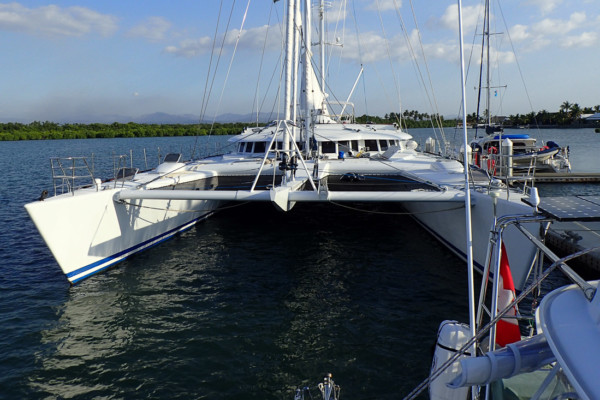
Douce France, a huge cat behind us that looks like it could have just hatched our boat!
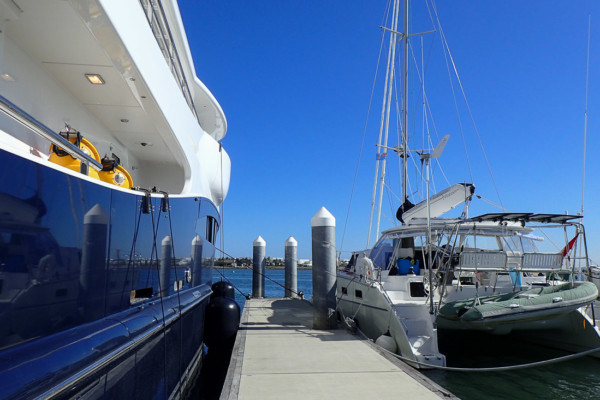
La Familia, a super yacht we had seen a few weeks previous.
Whistler got some fuel, washed and waxed. A Raymarine technician looked at our autopilot and after about2 1/2 hours of checking connections, and several Skype calls to techs in New Zealand, found our GPS antenna needed to be replaced. Fortunately, his company, Baobab, had the part in stock and only charged us for 1 1/2 hours labour.
We managed to fit in visits with Mango Moon, 360 Blue and Exit Strategy, a sister boat, while at Port Denarau. We are sad to learn that 360 Blue is for sale. They want to be closer to Ann’s parents and are looking forward to some land-based travel. We hope to see them back in the Pacific Northwest, and do some skiing together! Mango Moon and Exit Strategy will be in NZ for cyclone season, so we will hopefully be seeing more of them over the NZ summer.
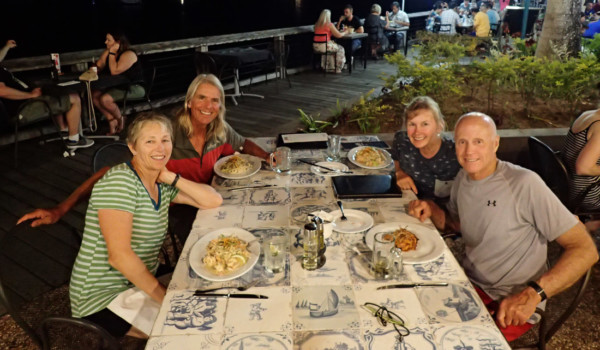
Dining out at Amalfi with Mark and Ann (S/V 360 Blue)
We sailed over to Musket Cove to test the autopilot. We found a nice anchorage and saw some familiar boats. Starry Horizons, a boat we had hung out with in Tonga, invited us over for Amy’s birthday that evening. David and Amy hosted a great evening on their spacious Fontaine Pajot Helia 44!
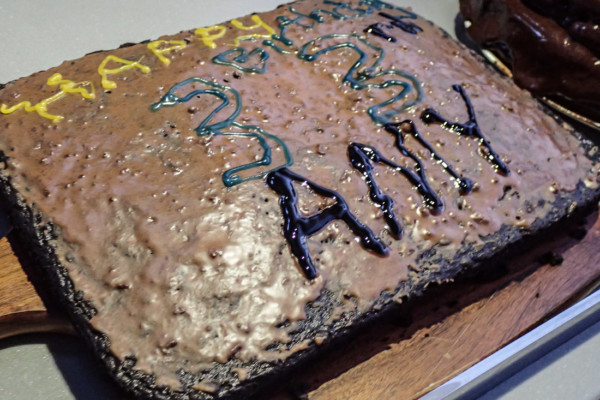
One of the delicious cakes!
Over the past week, we had numerous email discussions with our weather router. We also looked at various weather forecast models ourselves. It looked too late to catch that recent window as the winds would be light for much of the passage, meaning a lot of motoring and possible head winds on approaching NZ.
It looked unlikely we would see another for at least 10 days but a lot can change with forecasts out that far. A big high was predicted to park itself between Australia and NZ next week, creating a squash zone, southerly winds and lows (squalls) on its outer edges, not good for the passage. Here is a screenshot of the forecast for the 19th of October using PredictWind app.
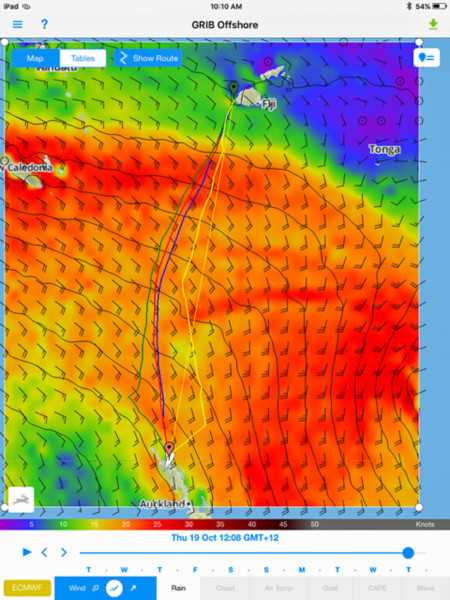
Strong SSE winds (head winds) would make for a slow, uncomfortable passage!
We debated about what to do in Fiji for the next week. Originally, Monty wanted to stay in Musket Cove where he might be able to kite and there were lots of options for socializing with the numerous boats anchored or moored there. It is also close to Vuda Pt, where we could clear out. Light winds were predicted in the Musket Cove area so there would be no kiting on the sand spit, and it was hot (34 degrees) and smoky at night! As it became more likely that we would not be going on passage for up to 10 days, we discussed going to the Yasawas for more exploring and to meet up with friend boats. Then it donned on us that we could go back to Nananu-I-Thake for more kiting. At least we could get some exercise! Warren Francis, who owns nearby Safari Island Lodge, is an experienced kiting instructor and assured us he would have some time for lessons. The water is warm, and the winds are likely to be strong enough for kiting almost every day. We set off around noon on Sunday.
We had a good close-hauled reach until sunset and then motored into 15 knot head winds, as expected. We knew daytime winds would be stronger, so better to push on. The route is well charted with a dotted line to follow the route on the chartplotter. We arrived at Nananu-I-Thake on Monday around 2 am and dropped the hook near the same anchoring spot we had a week or so ago. No drama.
Nananu-I-Thake is near Rakiraki on the NE corner of the “Mainland”. This is a big cane producing area, as is much of Fiji. We see cane trucks moving along dusty roads with great frequency. The hills around us are up in flames every night. Our boat is covered in ash some mornings when southerly winds blow. I asked Warren why the cane is being burned. He told us that the sugar cane mills in Fiji will be closing in about another week to ten days. The farmers are cued up to get their cane cut and processed before the mills close. If their cane is burned, they are able to jump the cue, as it must be cut within 7 days or it will be no good. It is a no-no to burn the cane, but it happens and no one seems to know who started the burn. I guess it is easier to hide lighting your fields on fire at night. It is bad for the environment, and they lose about 30% of the sugar in the cane when it is burned, but the farmers will continue this practice if they risk not getting their cane processed. “Why not keep the mills open longer”, I asked Warren. “Economies of scale”, he said.
Monty got out for a kite the day we arrived. He was a bit over powered on his 12m. He plans to work on taking jumps. I will work on getting up on the board for longer rides. We watched how-to-kite videos last evening! We plan to stay here for the next several days.
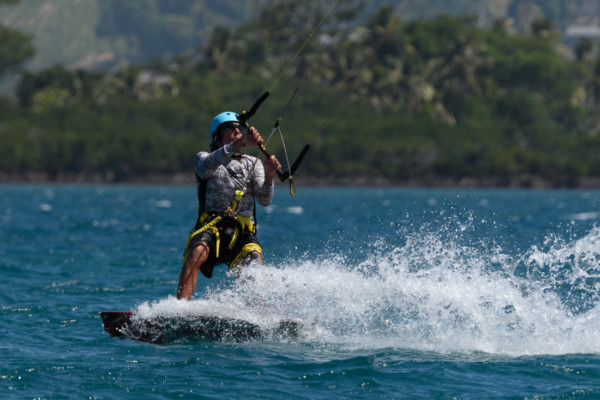
Making a slide turn, or as Warren calls them, “a dry turn”!
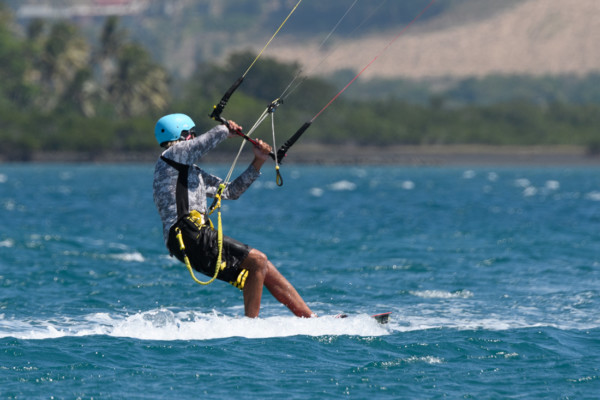
Monty heading off in the new direction, still dry!
As we were ready for an eight day passage, “our fridge is packed like a high school locker” (quote from Monty). If we run out of beer, the kiting instructor has offered to bring us some from his resort. If we need to restock food, we can go by dinghy and taxi to Rakiraki. Nice to be able to enjoy the tropics for a little while longer!
Post Views: 1,851








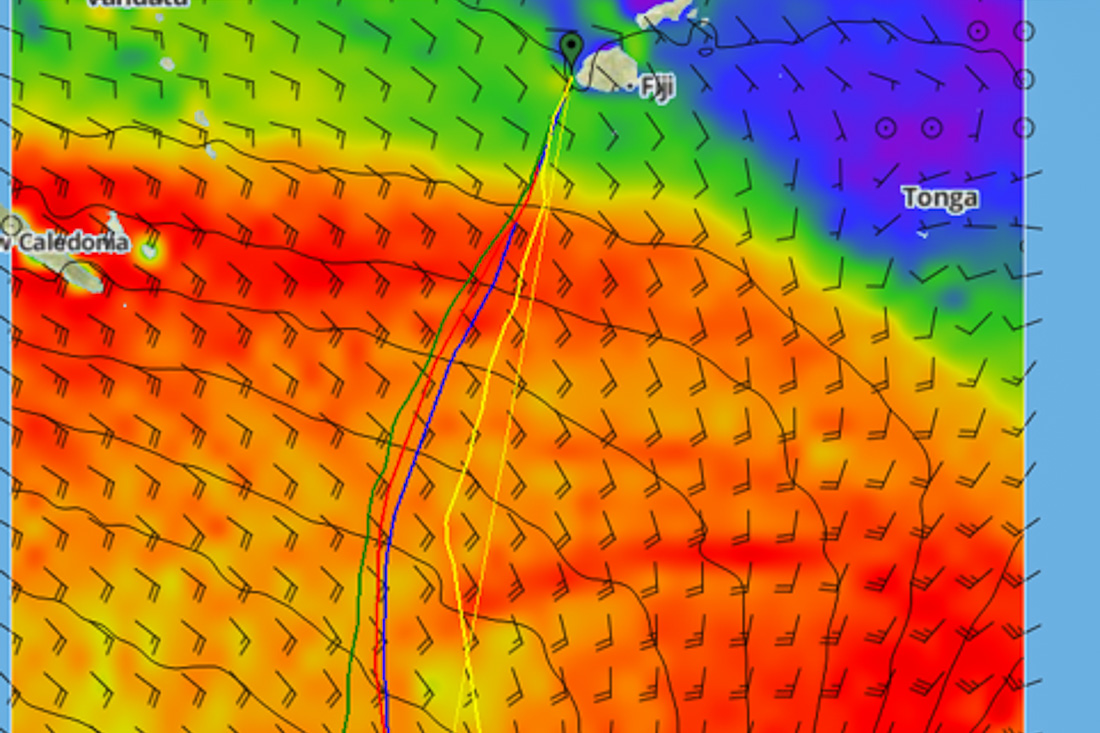
4 comments